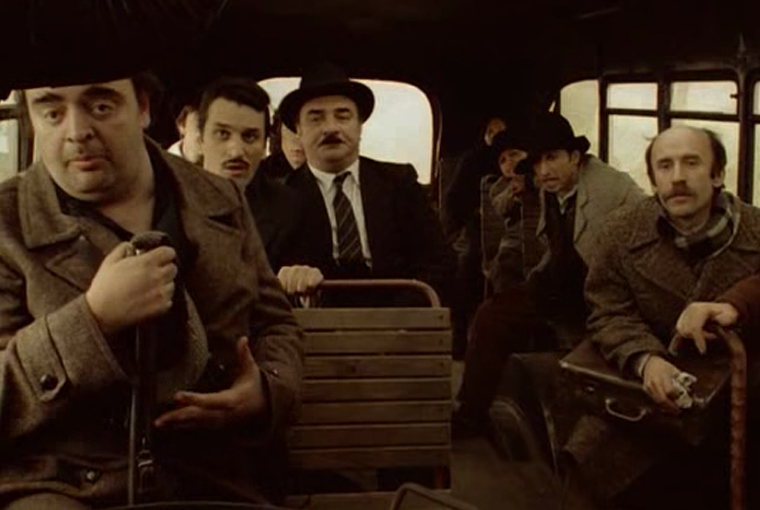Komodia
Slobodan Šijan’s Who’s Singin’ Over There? (Ko to tamo peva, 1980)
Vol. 19 (July 2012) by Konstanty Kuzma
Slobodan Šijan’s highly paced cult debut Who’s Singin’ Over There? (written by famous Serbian playwright & screenwriter Dušan Kovačević) revolves around a group of bus passengers heading towards Belgrade. As a title card reveals, the story is set on the 5th of April 1941, i.e. one day before the Nazis invaded Yugoslavia by bombarding Belgrade. The unlikely voyagers on the rusty bus seem to come from all parts of the kingdom – there is a World War I veteran, a TB-infected moaner, a pop singer eager to attract the attention of a fellow female passenger, the woman’s husband, an unlucky hunter, a Nazi sympathizer, and finally the bus crew – father and son (conductor and driver), who are careful to “comply with the rules” until one of the passengers dares them to drive two kilometres blind-folded without crashing the bus (many of the passengers will turn out to have such double standards).
Though the plot cumulates in the bombing of Belgrade by the Luftwaffe, Šijan prefers to deal with his plot the half-humorous, half-serious “Balkan” way, thus anticipating (or preluding) the post-Yugoslav cinema of the 90s. Looking at it this way, one will not be surprised to find a fair amount of sexual and violent energy in the film (the line toward kitsch being as thin as ever). As is the case in Balkan cinema to date, Who’s Singin’ Over There? is not void of musical interludes either – here, two gypsy children in over-sized rags accompany the narrative with a bittersweet song. Indeed, the film may best be described as a singing procession (this – originating from komos (procession) and ado (singing) – also happens to be the etymological meaning of the Greek word for comedy (Komodia)): Šijan’s disparate group is like a circus ensemble travelling across the country, ready to tackle any danger. That is, until war hits the country…
Though the passengers are reluctant to put up with the outlandish demands of the greedy conductor, they quickly realize that they have no other alternative to get to Belgrade than to trust him. Whether the bus is thus intended as an analogy for something bigger is arguable – political (anti-war) and social (anti-establishment) criticism is carefully portioned, never forced upon the viewer as an indispensable and clear-cut message. Still, it is no coincidence that the passengers are so diverse (at one point, they are even joined by a local priest and the Serbian army). Arguably, this is what distinguishes the passengers from a circus ensemble – rather than being castaways, the passengers are at the “centre” of society and thus the very people who create castaways (towards the end of the film, they blindly accuse the two gypsy musicians of stealing money from a passenger). Unlike circus performers, they are precisely the stereotypes society is made of.
Evidently, a truly nuanced understanding of regional comedies as a cultural foreigner is almost impossible. Just as explaining the political connotation of a joke spoils the point of the joke, so a comedy loses its spontaneity when seen with a manual. Perhaps this is one reason why Western scholars struggle with analyses of such cult films as Mimino by Gia Danelia (U.S.S.R.): these films lack the technical maturity of a Kusturica piece, whereas their scenographic appeal is hardly visible to a foreign eye. Consequently, the discourse becomes centered around cultural, historical and social facts which – though surely related to the success of the film – are nowhere near explaining it.
Sometimes, it is best to judge for oneself…




Leave a Comment